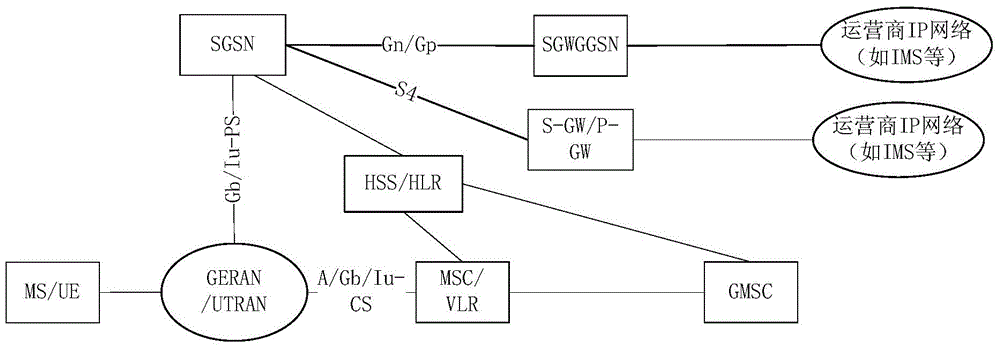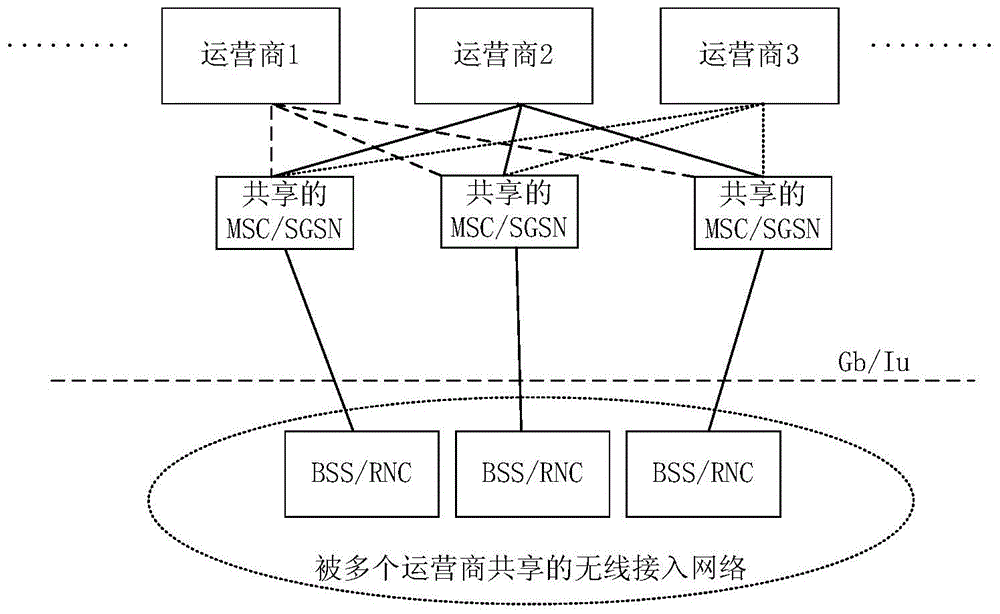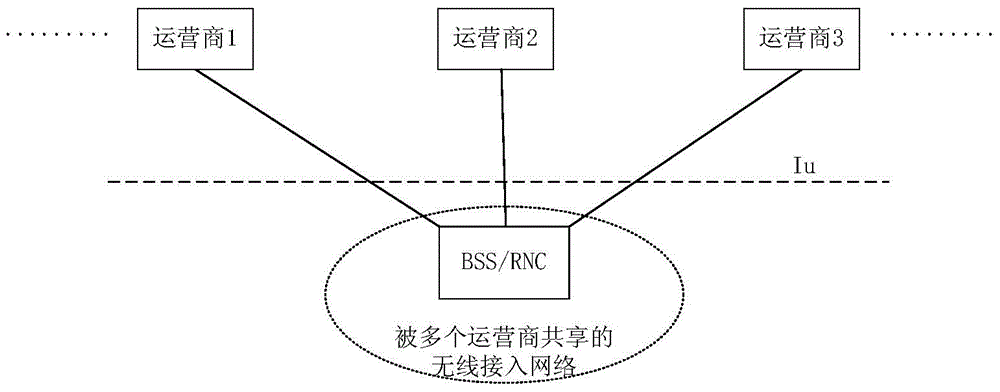PLMN selection method of PS domain and CS domain, and device
A home location and home location registration technology, which is applied in wireless communication, access restrictions, electrical components, etc., can solve the problems of different PLMNs, achieve the effect of improving user experience, avoiding differences in call charges or differences in terminal display operator names
- Summary
- Abstract
- Description
- Claims
- Application Information
AI Technical Summary
Problems solved by technology
Method used
Image
Examples
Embodiment 1
[0066] This embodiment may be applicable to UE handover in the PS domain, after performing a Route Area Update (RAU) on the target side, and after the PS service ends (that is, the target side does not support simultaneous connection of the PS service and the CS service ), the process of location area update (Location Area Update, LAU for short) is executed. This implementation manner can also be applied to the case where the UE performs a handover in the PS domain, and does not perform the RAU process when it reaches the target side, but performs a separate LAU process. At this time, steps S502 to S510 may be considered as completed at the source side, that is, completed before the handover. Therefore, there is no strict time limit requirement for steps S502-S510 and subsequent steps S512 and after.
[0067] In step S502, the UE initiates a RAU process.
[0068] In step S504, the SGSN initiates a location update request to the HLR / HSS after determining the PLMN for the UE. ...
Embodiment 2
[0090] This implementation mode can be applied to the process that the UE is handed over in the PS domain, after the RAU is executed on the target side, and the LAU process is executed after the PS service ends (that is, the target side does not support simultaneous connection of the PS service and the CS service). This implementation manner can also be applied to the case where the UE performs a handover in the PS domain, and does not perform the RAU process when it reaches the target side, but performs a separate LAU process. At this time, steps S602 to S614 may be considered as completed at the source side, that is, completed before the handover. Therefore, there is no strict time limit requirement for steps S602-S614 and the subsequent step S616.
[0091] In step S602, the UE initiates a RAU procedure.
[0092] In step S604, the SGSN initiates a location update request to the HLR / HSS after determining the PLMN for the UE. When this process occurs after handover, the PLMN...
Embodiment 3
[0108] The scope of application of this embodiment and Figure 5 Similarly, the execution process is also similar, the difference is that steps S514 to S518 do not need to be executed at this time, but MSC / VLR1 sends an authentication data request to HLR, and HSS returns an authentication data response to MSC after receiving it, which contains UE registration PLMN information of the PS domain. The MSC / VLR1 selects the PLMN information registered in the CS domain for the UE according to the PLMN information in the PS domain. If the MSC / VLR1 supports the PLMN, the MSC completes the remaining procedures of the LAU. Otherwise, MSC / VLR1 redirects the LAU to the MSC / VLR of other PLMNs, execute Figure 5 The remaining steps after step S522 in .
[0109] In addition, step S528 to step S532 may obtain the PLMN information of the PS domain through the authentication data request process.
PUM
 Login to View More
Login to View More Abstract
Description
Claims
Application Information
 Login to View More
Login to View More - R&D
- Intellectual Property
- Life Sciences
- Materials
- Tech Scout
- Unparalleled Data Quality
- Higher Quality Content
- 60% Fewer Hallucinations
Browse by: Latest US Patents, China's latest patents, Technical Efficacy Thesaurus, Application Domain, Technology Topic, Popular Technical Reports.
© 2025 PatSnap. All rights reserved.Legal|Privacy policy|Modern Slavery Act Transparency Statement|Sitemap|About US| Contact US: help@patsnap.com



